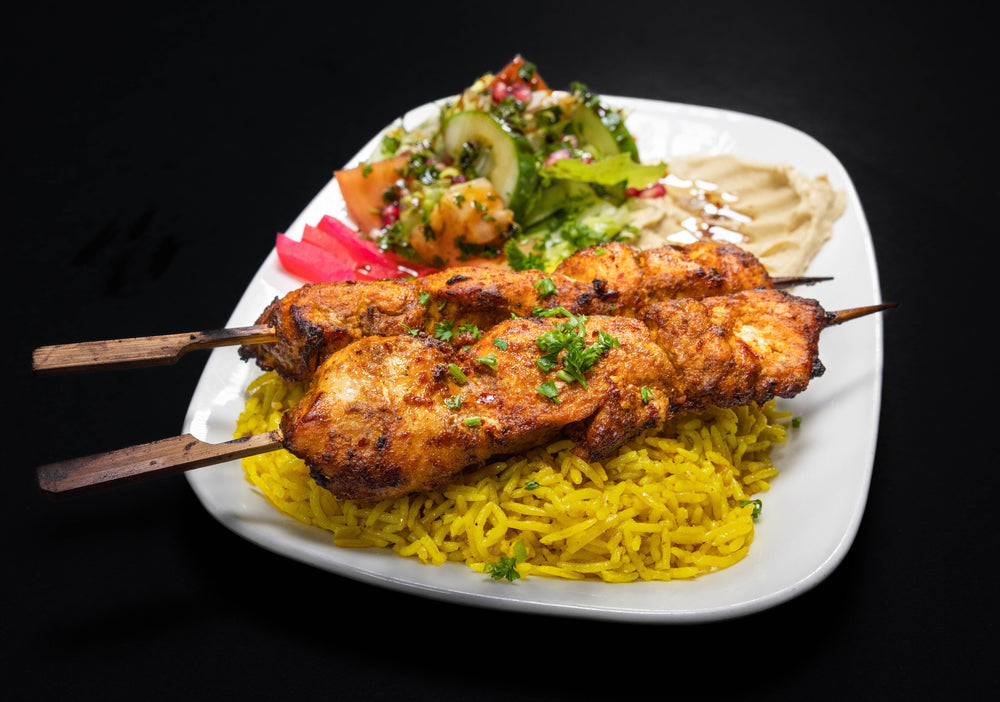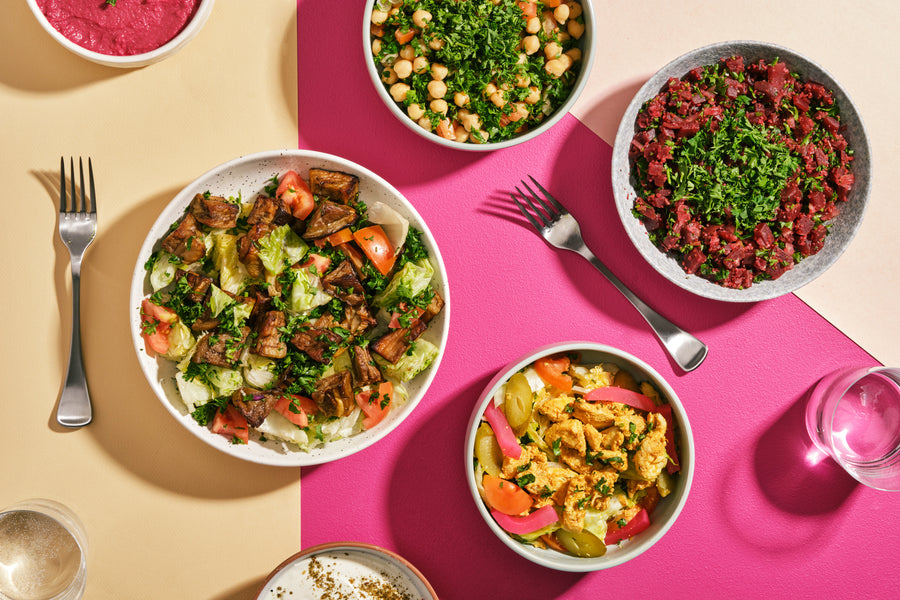All Regarding the Rich Flavors and Traditions of Syrian Food: A Culinary Journey
Syrian food offers a special blend of tastes and practices that show its rich social background. With staple ingredients like olive oil and garlic, together with a selection of spices, the recipes are both varied and inviting. From the intricate prep work of kibbeh to the sweet appeal of baklava, each facet of this cooking landscape discloses much deeper tales. As one discovers the essence of these tastes, a greater understanding of communal eating and celebration arises.
The Significance of Syrian Ingredients
The significance of Syrian active ingredients lies in their rich diversity and deep-rooted social relevance. Influenced by the nation's varied location and history, Syrian food incorporates a broad selection of spices, herbs, and fresh fruit and vegetables. Staples such as olive oil, garlic, and lemon provide a structure, while flavors like coriander, cumin, and sumac add depth and complexity to dishes.The use fresh natural herbs, consisting of parsley and mint, highlights the importance of seasonal ingredients. In addition, the region's productive dirt yields an abundance of veggies and fruits, such as eggplants, pomegranates, and tomatoes, which are integral to lots of recipes. Grains like bulgur and rice develop the base of many dishes, highlighting the importance of these active ingredients in Syrian culture. This mix of tastes reflects not just a cooking practice but also a tapestry of historical influences, making Syrian components vital to understanding its cuisine's lively personality.

Iconic Dishes of Syrian Cuisine
Syrian cuisine is renowned for its famous dishes that showcase an abundant tapestry of structures and flavors. Typical meze plates provide a variety of tiny meals that tantalize the taste buds, while hearty primary courses supply gratifying centerpieces for dishes (Afternoon Tea Vancouver). To finish the experience, a selection of savory desserts includes a sweet note to the cooking trip
Traditional Meze Plates

Hearty Main Courses
Hearty primary programs function as the focal point of Syrian dining, showcasing a mix of flavors that show the nation's rich cooking customs. Meals such as kebab hindi, featuring marinaded lamb skewers, and the popular mujaddara, a calming mix of lentils and rice, highlight making use of fragrant spices and fresh ingredients. One more staple is the legendary kibbeh, made from bulgur wheat and minced meat, commonly offered in various kinds, including baked, fried, or raw. In addition, the flavors of the land come to life in recipes like packed vegetables, referred to as mahshi, which are full of rice, meat, and herbs. These main dishes not only please cravings but also inform tales of family members events and social heritage.
Delightful Desserts Option
A delightful range of desserts specifies the sweet side of Syrian food, providing an alluring end to any dish. Among one of the most popular confections are baklava, delicate layers of phyllo pastry filled up with nuts and saturated in syrup, and maamoul, shortbread-like cookies commonly packed with nuts or dates. Knafeh, an abundant dessert made from slim noodle-like pastry soaked in syrup and layered with cheese, is a prominent option, specifically during festive occasions. Additionally, the pleasant and aromatic rice dessert, called roz bil laban, gives a comforting finish. These savory treats not just showcase the area's cooking expertise however additionally show the social heritage of Syria, making them treasured treats in both restaurants and homes alike.
Standard Cooking Strategies
Although modern-day eases have actually affected numerous culinary methods, conventional cooking strategies remain important to Syrian cuisine. These approaches frequently stress using fresh, seasonal active ingredients and focus on slow food preparation to establish rich tastes. Strategies such as barbecuing, braising, and cooking are widespread, enabling the all-natural tastes of the active ingredients to radiate through.One remarkable technique is the preparation of kibbeh, a recipe made from carefully ground meat and bulgur. It calls for experienced hand-rolling into different shapes and can be baked, deep-fried, or offered raw. Additionally, the art of making bread, particularly pita, is main to numerous dishes, often cooked in a standard stone oven.Preservation methods like pickling and fermenting likewise play an essential function, improving the variety of flavors discovered in Syrian recipes. These strategies not only reflect the area's agricultural heritage but likewise promote a solid sense of neighborhood via shared cooking practices.

The Function of Spices in Flavoring
Seasonings serve as the heartbeat of Syrian food, infusing meals with complex tastes and aromatic deepness. Each spice plays a pivotal duty, contributing not just to taste but likewise to the social heritage of the region. Generally utilized flavors consist of cumin, sumac, and coriander, each supplying an one-of-a-kind account that elevates standard recipes. For circumstances, cumin supplies warmth and earthiness, while sumac includes an appetizing illumination, boosting the overall dish.Syrian chefs frequently blend spices to develop harmonious accounts, mirroring the elaborate equilibrium of tastes that specify the food. Making use of flavors is not merely for spices; it likewise serves to protect food and improve its nutritional value. This thoughtful incorporation highlights a deep understanding of the culinary arts, where spices end up being vital authors, sharing the abundant history and varied influences that define Syrian gastronomy. Eventually, spices are essential in crafting genuine and memorable Syrian dishes.
Celebratory Meals and Festive Custom-mades
Congratulatory dishes in Syrian cuisine are marked by traditional feast dishes that mirror the country's abundant cooking heritage. Unique celebrations frequently involve distinct rituals that improve the public experience of dining. These customizeds not just honor the importance of the occasions but also reinforce familial and cultural bonds.
Standard Banquet Cuisines
When family members collect to commemorate significant celebrations in Syria, typical feast dishes take center phase, showcasing the rich culinary heritage of the region. These celebrations often include vibrant plates of mezze, consisting of hummus, baba ghanoush, and tabbouleh, which function as wonderful beginners. The main dish typically highlights lamb or hen, marinaded and cooked to excellence, usually accompanied by great smelling rice pilaf or bulgur. Among one of the most precious meals is maqlooba, a split rice dish with vegetables and meat, flipped upside down prior to offering. Sweets additionally play a critical duty, with baklava and knafeh using a sweet surface to the dish. Each dish not only thrills the taste buds however also mirrors the deep-rooted practices and communal spirit of Syrian culture.
Unique Event Rituals
Special events in Syria are marked by rich rituals that intertwine food and festivity, reflecting the social value of public celebrations. Commemorative meals often include conventional recipes such as kibbeh, tabbouleh, and numerous grilled meats, prepared with treatment and shared amongst friends and family. During religious vacations like Eid al-Fitr and Eid al-Adha, households integrated to prepare unique sugary foods like maamoul, symbolizing unity and happiness. Wedding events are specifically intricate, including multiple training courses and vibrant screens of hospitality. These events are not simply about food; they incorporate storytelling, music, and dance, strengthening social bonds and social heritage. Via these routines, Syrians commemorate life's milestones, making sure practices are passed down with generations, improving their culinary landscape.
The Significance of Sharing and Community
Sharing meals is a fundamental facet of Syrian culture, showing the deep-rooted worths of neighborhood and connection. In Syria, food is not simply food yet a method of bringing individuals with each other. Pals and families collect around the table to take pleasure in conventional recipes, cultivating bonds and developing long-term memories. This public eating experience emphasizes hospitality, where hosts go to excellent lengths to assure every visitor really feels invited and nourished.The act of sharing food also symbolizes kindness and solidarity, reinforcing social connections within neighborhoods and larger neighborhoods. During events, it prevails for people to serve each various other, showcasing a spirit of togetherness that transcends distinctiveness. Events, whether little or huge, are usually noted by the sharing of meals, where varied tastes visit the website and recipes collaborated, mirroring the rich tapestry of Syrian society. Accordingly, the relevance of sharing and area in Syrian food is not only a culinary custom however an important social technique.
A Cooking Exploration of Syrian Desserts
Although typically outweighed by full-flavored recipes, Syrian sugary foods hold a cherished location check out here in the nation's culinary heritage. These confections mirror the area's abundant background, mixing tastes and strategies from numerous cultures. Traditional treats like baklava, with its layers of phyllo bread, nuts, and honey syrup, display the artistry associated with Syrian cooking. Ma'amoul, a shortbread-like cookie loaded with dates or nuts, is commonly planned for cheery events, representing hospitality and celebration.Another cherished sweet is Knafeh, a pastry taken in syrup and split with cheese or cream, offering a delightful contrast of textures. Syrians additionally appreciate a range of fruit maintains and syrups, commonly offered with tea or as part of a bigger spread throughout gatherings. These sugary foods not just satisfy the taste but likewise work as a bridge between generations, maintaining the practices and stories of Syrian culture with each delightful bite
Often Asked Questions
What Are the Health Perks of Standard Syrian Foods?
The health and wellness benefits of conventional Syrian foods include rich nutrients from fresh vegetables, vegetables, and whole grains. These components advertise heart health, improve food digestion, and offer necessary vitamins, contributing to overall health and a balanced diet.
Just How Has Syrian Food Progressed Throughout The Years?
Syrian cuisine has actually evolved substantially, influenced by historic profession routes, cultural exchanges, and regional availability of active ingredients. Standard meals have integrated contemporary tastes and techniques while preserving their rich heritage, mirroring a varied cooking landscape.
Exist Vegetarian or Vegan Options in Syrian Cuisine?
Syrian cuisine offers many vegan and vegan options, featuring dishes like falafel, tabbouleh, and packed grape leaves. These meals highlight the region's rich agricultural heritage, showcasing fresh veggies, grains, and aromatic spices in vivid combinations.
What Beverages Pair Well With Syrian Meals?
When considering drinks that complement Syrian recipes, one might discover that mint ayran, tea, and pomegranate juice enhance the dish's flavors. Furthermore, red a glass of wine typically sets well with the flavors typically located in these cuisines.
Exactly How Can I Recreate Syrian Meals at Home?
To recreate Syrian meals at home, one ought to check out authentic recipes, gather typical ingredients, and use food preparation methods one-of-a-kind to the food. Try out seasonings and discussion likewise improves the overall dining experience. Syrian food is renowned for its renowned dishes that showcase an abundant tapestry of structures and tastes. Spices offer as the heartbeat of Syrian cuisine, infusing recipes with intricate tastes and aromatic depth. Commemorative meals in Syrian cuisine are noted by conventional feast dishes that reflect the nation's rich cooking heritage. Celebrations, whether huge or little, are visit our website commonly noted by the sharing of dishes, where diverse tastes and meals come together, mirroring the rich tapestry of Syrian society. Syrian cuisine offers numerous vegetarian and vegan alternatives, featuring dishes like falafel, tabbouleh, and packed grape leaves.